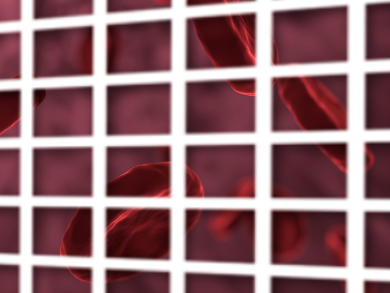Chemotherapy drugs used in cancer therapy usually have significant side effects. Restricting these drugs to the area of the tumor and preventing them from entering the rest of the body could help to reduce these toxic effects.
Joseph M. DeSimone, Carbon, Inc., Redwood City, CA, University of North Carolina, Chapel Hill, and North Carolina State University, Raleigh, all USA, Steven W. Hetts, University of California, San Francisco, USA, Nitash P. Balsara, University of California and Lawrence Berkeley National Laboratory, Berkeley, USA, and colleagues have developed 3D-printed porous polymer absorbers which can be placed in veins. These absorbers capture excess chemotherapy drugs from the bloodstream after the drugs have passed through the tumor.
The team first 3D-printed a porous cylindrical support structure using the photoinduced cross-linking of poly(ethylene glycol) diacrylate (PEGDA). The cylinders have a diameter of 5 mm and a length of 3 cm. They contain a hole through which a thin wire can be threaded, which allows their placement using microinvasive surgery. The support structure was coated with a nanostructured block copolymer, poly(tert-butylstyrene)-b-poly(ethylene-co-propylene)-b-poly-(styrene-co-styrenesulfonate)-b-poly(ethylene-co-propylene)-b-poly(tert-butylstyrene) (PtBS−PEP−PSS−PEP−PtBS). This multifunctional polymer anchors itself to the support and captures the chemotherapy drugs.
The team tested the absorbers in pigs, using the drug doxorubicin. They found that about 64 % of the drug was captured by the material and prevented from spreading through the organism. The absorber can be removed after the infusion of the drug. No noticeable harmful side effects were found. According to the team, the method could be further improved by tuning the shape, number, and composition of the absorbers. The researchers believe that the approach could improve cancer treatment by allowing high-dose regional chemotherapy.
- 3D Printed Absorber for Capturing Chemotherapy Drugs before They Spread through the Body,
Hee Jeung Oh, Mariam S. Aboian, Michael Y. J. Yi, Jacqueline A. Maslyn, Whitney S. Loo, Xi Jiang, Dilworth Y. Parkinson, Mark W. Wilson, Terilyn Moore, Colin R. Yee, Gregory R. Robbins, Florian M. Barth, Joseph M. DeSimone, Steven W. Hetts, Nitash P. Balsara,
ACS Cent. Sci. 2019.
https://doi.org/10.1021/acscentsci.8b00700




